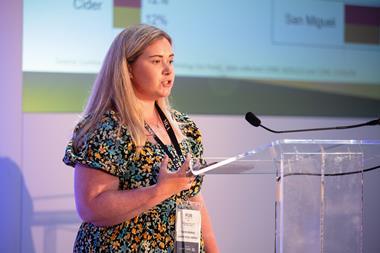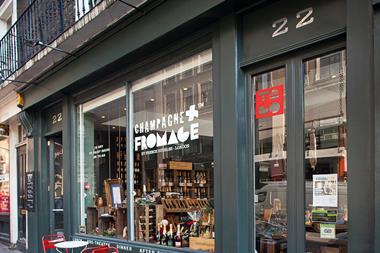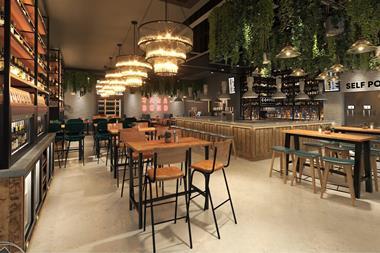Until recently, wine bars were often considered inaccessible and snobby. As a new wave of contemporary natural wine bars pop up, MCA explores the evolution of the category and its potential to grow beyond trendy independents
Not so long ago, wine bars were widely seen as dimly-lit, soft jazz-playing establishments, frequented by an old-school generation of wine drinkers.
“Until the 2010s, the wine bar scene was still very much seen as a cheesy, basement level thing, it wasn’t really cool,” recalls Stephen Finch, CEO of ‘self-pour and explore’ wine bar concept Vagabond.
Since the pandemic, a new wave of city wine bars has cropped up, run by wine enthusiasts, serving by the glass, with stylish hipster-inspired interiors, and a contemporary food offering.
Bambi, in London Fields is one of the latest variations in the category to pop up across the city in recent months, offering natural wines and small plates alongside nightly DJ sets, attracting a younger demographic through its doors.
Finch in Brixton also forms part of a flurry of trendy wine bars launching in London this year, with a focus on elevating the wine drinking experience.
The new bar comes from small bar group, Grays & Feather, following the opening of Plume in Covent Garden in 2018.
It forms part of wider expansion plans, with a third avian-themed wine bar, Peregrine, set for Leadenhall Market later this year.

Grays & Feather founder Andrew Gray has experienced the changing faces of the wine category during his time in the industry.
“When I came into the industry, it was far less accessible. I think it was considered to be broadly a lot more elitist,” he explains.
“Venues now are very open to saying, let me walk you through the menu. Let me tell you about everything that’s listed. I think that’s cool.”
At the more accessible, cheap and cheerful end of the spectrum, Veeno has continued to expand its footprint across the UK this year, opening its ninth site in Milton Keynes in September.
The wine cafe brand remains on the lookout for franchise partners to continue expanding, with a focus on affluent market towns across the UK.
Humble Grape is also about to open the doors to its sixth wine bar in Crouch End, complete with a terrace for alfresco drinking and wine tasting masterclasses.
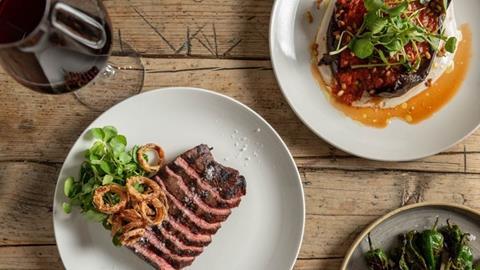
Meanwhile, well-established albeit more traditional operators such as Davy’s retain a mercantile stronghold in the capital with 16 sites across London.
Offering a more modern take on the dusty City haunt, the group now includes wine and tapas bar concept El Vino, which accompanies its wine-list with a selection of British tapas, for a more relaxed dining experience.
Mark Newton, client director at CGA by NIQ, says it is clear a “new breed” of wine bar is starting to gain traction in the UK.
“These hybrid venues are designed to appeal across the board and certainly offer an attraction to the key 18–34-year-old consumer demographic who are important to the broader revival of the wine category,” he tells MCA.
By providing a category specific offer in “generally modern, chic surroundings”, they connect with younger drinkers –with an often small, but high-quality and food offer.
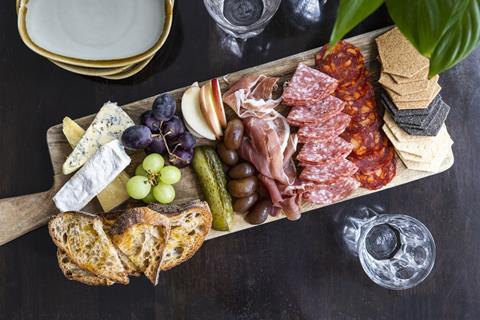
CGA data shows that although in the last twelve months, the number of overall on-trade outlets has declined by c.-3.6%, bars are seeing a lower level of decline (c. -2.2%) suggesting less negative net movement and proportionally more openings.
Since Covid, wet-led bars have generally weathered the storm better than food-led operations, such as restaurants and casual dining.
And although wine consumers have historically tended to be older than other category drinkers, there does appear to be a shift downwards in the average age of those engaging with the category.
Gray says although the demographic in his Covent Garden site can change seasonally, there is a movement towards consumers becoming more engaged in learning about the industry.
“We work with a very diverse demographic, but people in general are much more relaxed since the pandemic,” he says.
“They’re much more engaged and wanting to communicate, but also they are spending more.”
Newton also notes that younger drinkers have a stronger appetite for education and experimentation in the category, a trend which lends itself to the concept of the new breed of wine bar.
For Vagabond’s Stephen Finch, who has been at the vanguard of a movement which champions smaller producers and natural wines, education has always been central to the 12-strong concept.
“The education bit is easy to talk about, but it’s a bit harder to actually do”, Finch tells MCA.
“The best way to do it is in bite-size bits of education”, he adds, Vagabond’s wine cards offering customers a concise factsheet about the pours they are trying.
Finch also places importance on the ability to offer tasting measures across the experimental self-pour wine concept. “Mass personalization, that’s what our business model is. It’s allowing people to do stuff their own way.
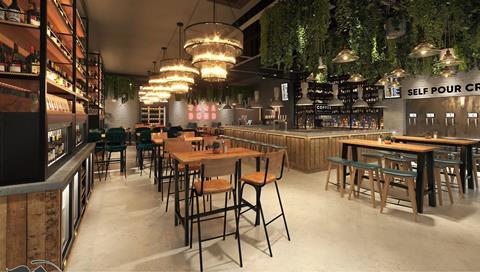
Despite a smaller pool of wine bars with considerable ambitions to scale, he sees a growing number of one-off passion projects popping up.
“You either have knowledge and the passion for wine or you have the commercial wherewithal, and those two rarely overlap.”
Newton notes that currently, the new wave appears to be relatively niche in terms of proportion of physical outlets.
It is also focused in more affluent, suburban centres, he adds.
At a base level, Vagabond’s demographic sits in the 25–45-year-old age range, and is comprised of a generally urban-living, white collar, aspirational consumer.
Historically focused on inner city locations, Vagabond’s latest move has seen the brand expand into airports with new outlets at London Gatwick and Heathrow.
Finch also sees potential for the wine bar outside of its traditional city haunts.
“To what extent can people really crack the code for having something that’s a bit more regional, in the smaller towns?” he asks.
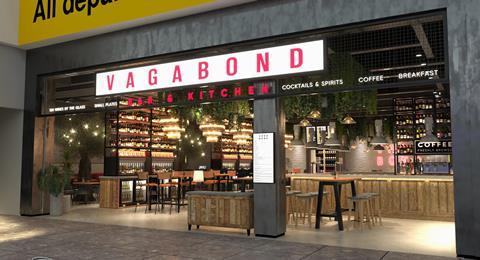
Newton adds that as drinkers continue to look beyond the ordinary, with increased interest in the experiential, wine bars could fulfil this demand.
Behind the bar, Gray has seen many consumers keen to engage in more curated experiences.
“People are looking for those experiences that can be led by other people, to take it from going somewhere and eating and drinking something, to really having something that’s quite curated.”
Trend analysis by CGA shows that while premiumisation has been a broad factor in the on-trade, this has been impacted by the cost-of-living crisis.
While many drinkers remain interested in higher quality drinks, this is balanced by a need for ‘good value’.
Gray sees this value consciousness as tied into the growing base of more engaged consumers, who are moving away from the “big names” in wine regions.
“People are interested in value and that comes from education, they think there’s nothing wrong with me exchanging my Burgundy from something from Hungary.”
The drivers in growth of the two main performers in the wine category are quite different, notes CGA.
A rise in rose is coming via the increased interest in more premium, sophisticated, styles from countries such as France and Spain.
Sparkling wine sales increases meanwhile are much more about price, as drinkers are wanting their fizz fix, but view Champagne as a less affordable option.
Data from Lumina Intelligence shows that across the board there have been small increases in the proportion of wine being consumed at hospitality occasions.
Of those who opt for an alcoholic drink at a restaurant or pub occasion, around a quarter (26%) have wine, and this proportion has increased +2ppts year-on-year in the 12 weeks to September 7.
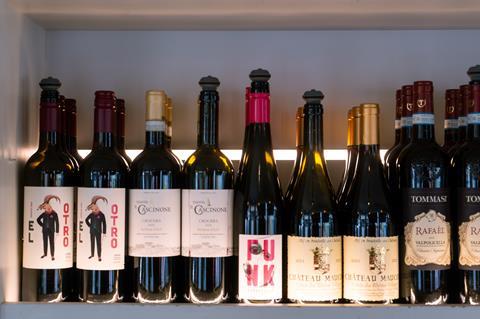
In the same period, wine was consumed at 11% of pub and restaurant occasions, and this has increased by +3ppts year-on-year.
As far as Finch sees it, “the whole wine bar renaissance has a long way to go still”.
He sees potential for wine businesses to work across channels to find new ways of engaging consumers.
Many operators are already tapping into consumer engagement beyond their four walls with online clubs and loyalty programmes.
Humble Grape’s, £25 a month Humble Club, offers members 2 free glasses of wine per week at any of its wine bars, alongside discounts at its online shop, and money off event tickets.
Meanwhile, an online sign up to the Veeno Club gives consumer the opportunity to stay updated on news, specialised offers, and online store specials, alongside birthday perks.
“I do think there’s a huge opportunity for physical wine businesses to become more omnichannel in how we engage customers when they’re not inside the venue, in a way that they embrace and want to engage with”, Finch adds.
Precis

































